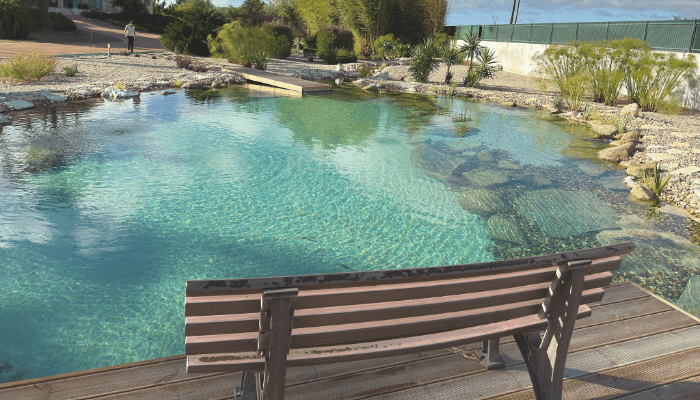Key Takeaways
- Traditional saunas offer high heat and an authentic experience
- Infrared saunas use lower temperatures with deep body heat
- Steam saunas provide high humidity for skin and respiratory benefits
- Hybrid saunas combine infrared and traditional heating in one unit
- Smoke saunas are traditional, atmospheric, and labor-intensive
- Cultural sauna types offer unique traditions and sensory experiences
- Match sauna type to goals, budget, and space available
- Consider installation, running costs, and maintenance needs
- Location and ventilation requirements vary by sauna type
- The best sauna is the one you will use regularly and enjoy

Sauna bathing is like exercise for people who hate running. In Finland, where saunas are part of daily life, studies link regular sauna use to better heart health, improved recovery, and even longer lifespan. That’s not marketing, that’s decades of tradition backed by research.
The problem? Not all saunas are the same. And if you choose the wrong one, you might not get the experience you expect. Worse, you might end up with an expensive wooden box you barely use.
Traditional wood-burning? Infrared? Steam? Hybrid? They each have unique benefits and drawbacks. And that means you need to think about your goals before you start browsing catalogs. Are you chasing deep sweat detox sessions or low-temperature relaxation? Do you want cultural authenticity or low-maintenance convenience?
A traditional Finnish sauna will give you dry heat and a full-body intensity that makes you feel reborn. An infrared sauna heats your body directly, letting you enjoy long sessions at lower temps. Steam rooms drench you in humidity and leave your skin feeling incredible. Hybrids? They give you the option to mix it up, switching between styles as you like.
Choosing is less about which sauna is “best” and more about which is best for you. That’s why understanding the differences matters. You need to know the heat levels, the humidity, the installation needs, and the running costs. You need to think about where it will go in your home or yard, and how often you’ll realistically use it.
Because the most expensive sauna in the world is worthless if it just sits there collecting dust. But the right sauna, the one that fits your life, becomes a ritual. It’s the place you recharge, unwind, and step out feeling better than when you went in.
This guide will walk you through each type, highlight the strengths and weaknesses, and give you the information you actually need to make a smart choice. No marketing fluff. No half-truths. Just straight, useful advice you can use before spending a single dollar.

Traditional Saunas (Wood-Burning and Electric)
If you picture a sauna, you’re probably thinking of the traditional Finnish version. A small wooden room. Benches at different heights. A heater loaded with rocks you pour water over for a burst of steam. Temperatures typically sit between 160°F and 200°F. It’s dry heat with a short-lived spike in humidity when you toss water on the rocks.
Wood-burning saunas use a stove that burns logs to heat the rocks. They create an authentic, earthy aroma and a sense of ceremony. They take time to heat, usually 30 to 60 minutes, and need proper ventilation.
Electric saunas swap the stove for a powered heater, cutting down on heat-up time and making them easier to control. They still deliver the same intense, whole-body sweat but without managing firewood.
The main pros: powerful heat, deep relaxation, and a design that has stood the test of centuries. The cons: longer heat-up time than infrared, higher running costs for electric, and more upkeep for wood-burning.
Infrared Saunas
Infrared saunas are a different experience entirely. Instead of heating the air, infrared panels emit light waves that heat your body directly. Temperatures are lower, usually between 80°F and 130°F, but you’ll still sweat plenty because the heat penetrates deeper into tissues.
Sidenote: 80°F to 130°F is usually between 27°C and 54°C.
Sessions can last longer since the air isn’t overwhelmingly hot. You can step in within minutes of turning it on, and it’s more energy-efficient than heating an entire room of air. Many people find the gentler environment easier to breathe in, especially if high heat feels suffocating.
The trade-off? You won’t get that classic wave of hot, dry air or the same ritual of pouring water on rocks. It’s more of a personal wellness tool than a cultural experience.

Steam Saunas and Turkish Hammams
If dry heat isn’t your thing, steam saunas might be. These are essentially high-humidity environments, often at lower temperatures than traditional saunas, think 110°F to 120°F or roughly 43°C to 49°C, but with near-100% humidity. The moisture opens pores, hydrates skin, and can make breathing feel easier if you have congestion.
A Turkish hammam is a more elaborate cultural version, often with marble interiors, ornate tiles, and multiple heated rooms at different temps. It’s less about searing heat and more about slow, enveloping warmth and moisture.
The benefits are obvious for skin health and relaxation, but the setup is more demanding. You’ll need waterproof finishes, strong ventilation, and frequent cleaning to keep mold and mildew away.
Hybrid Saunas
Hybrid models combine infrared panels with a traditional heater. This gives you options: fire up the infrared for quick sessions, or run the heater for a full high-heat experience. You can even use both at once to get a faster warm-up followed by the intensity of traditional heat.
These are ideal for households where preferences differ. One person might want a long, low-temp sweat, while another craves the intense blast of 190°F air. Hybrids can deliver both without needing two separate units.
The downside is cost and complexity. More components mean more things that can break, and you’ll pay more upfront. But if variety is a priority, it’s hard to beat.
Smoke Saunas
The smoke sauna is the oldest form of sauna and still used in parts of Finland. It has no chimney. Instead, a wood fire burns for hours, filling the room with smoke. Once the desired heat is reached, the fire is extinguished, and the smoke is vented before entering. What’s left is an aromatic, deeply heated room with a gentle, even warmth.
The experience is unmatched in atmosphere. The walls are darkened from years of smoke, and the scent lingers in the air and wood. It’s not for those who want quick convenience as heating can take half a day, and maintenance is intensive. But for purists, it’s a connection to centuries of tradition.
Other Cultural Sauna Variants
Saunas and sweat baths exist worldwide, each with its own twist:
- Russian banya: Similar to Finnish saunas but with more steam and often combined with cold plunges.
- Korean jjimjilbang: Large public bathhouses with various heated rooms, salt rooms, and spas.
- Mexican temazcal: A domed sweat lodge with herbal steam and guided rituals.
- Native American sweat lodge: A ceremonial experience involving steam created from pouring water on heated stones.
These variations offer more than heat. They’re rooted in cultural practices, community, and spirituality. If you’re drawn to tradition and shared experience, exploring these can deepen your appreciation for sauna culture.

Choosing the Right Sauna Type for You
Think of sauna selection as matching a tool to a job. If you want the authentic, high-heat ritual, go for wood-burning or electric traditional models. If convenience and lower temps appeal, infrared could be your best choice. If you crave skin hydration and don’t mind moisture, steam is the clear winner. And if you want flexibility, hybrids give you both worlds in one.
Budget matters too. Infrared units often cost less to install and run. Wood-burning requires space for firewood and a chimney. Steam setups need waterproofing and drainage. Hybrids are the most versatile but usually the priciest upfront.
Maintenance should be part of your decision. Infrared needs the least upkeep. Traditional saunas require cleaning and, in the case of wood-burning, ash removal. Steam rooms demand strict hygiene to prevent mold.
Space and location will narrow your options. Indoor setups must meet ventilation and electrical requirements. Outdoor builds need weatherproofing. And of course, personal preference. The feel, the look, the ritual might outweigh all practical factors.
The right sauna isn’t just a purchase. It’s a habit you’ll build into your week, a space you’ll return to again and again. That’s why the “best” sauna is the one that fits your lifestyle as much as your budget.

Conclusion
Saunas aren’t just wooden rooms with heaters. They’re experiences. They’re tools for recovery, relaxation, and sometimes even connection. But like any tool, they only work if they’re the right fit.
By now, you’ve seen the landscape. Traditional saunas deliver high heat and the most classic feel. Infrared models give you lower temps with deep-penetrating warmth. Steam rooms turn up the humidity for skin and respiratory benefits. Hybrids offer flexibility for those who can’t decide, or don’t want to.
There’s no single winner here. The “best” sauna is the one you’ll use regularly. The one that fits your health goals, space, budget, and personal preferences.
Think beyond the purchase price. Consider installation, maintenance, and energy use. Factor in how much time you actually want to spend heating it up before you get in. If you hate waiting, an infrared might be a smarter move than a wood-burning. If you crave ritual, wood-burning could be worth every extra minute.
Remember location matters. Indoor installations need proper ventilation. Outdoor setups need weather protection. And every sauna needs cleaning and upkeep to stay safe and pleasant to use.
Most of all, see your sauna as more than a luxury item. See it as a wellness habit. A ritual. Something you look forward to, like a favorite workout or meal. When it’s part of your lifestyle, it’s not just worth the cost. It pays you back in quality of life.
So choose the one that excites you. The one that fits your rhythms. The one that you’ll step into on a cold morning or after a long day and think, “Yes. This was the right call.”
Ready to bring the right sauna into your life?
Whether you’re dreaming of a wood-burning retreat or an efficient infrared escape, Oásis Biosistema helps you design a wellness space that fits your goals, space, and style.
FAQ
Which type of sauna is the best?
The best sauna depends on your goals. Finnish saunas offer high heat for deep sweating, infrared saunas provide gentle heat that penetrates the skin, and steam rooms add humidity for respiratory benefits.
Which is healthier, steam or dry sauna?
Both offer health benefits. Steam saunas help with hydration and respiratory health, while dry saunas improve circulation and muscle recovery. Choice depends on personal health needs and heat tolerance.
How many types of saunas are there?
Common sauna types include Finnish (dry), steam, infrared, and smoke saunas. Variations exist in heat source, humidity, and temperature.
Is infrared or Finnish sauna better?
Infrared saunas offer lower heat and deep tissue penetration, making them gentler for longer sessions. Finnish saunas provide intense dry heat for a traditional sweat experience. Preference depends on comfort and health goals.



